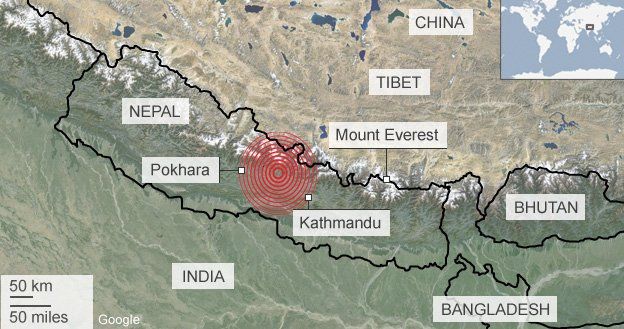China's 'execution parade' sparks controversy
Latest update : 2013-03-02
China’s state television aired images of four convicted killers shackled and being taken to their place of execution on Friday, sparking outrage among human rights activists. The four men were executed for the murder of 13 Mekong sailors.
An “execution parade” on China’s state television of four foreign men sentenced to death for killing 13 sailors on the Mekong River caused anger in China on Friday, with many people saying it was an unnecessary display of vengeance.
The 2011 murder of the Chinese sailors was one of the deadliest assaults on Chinese nationals overseas in modern times and prompted the government to send gunboat patrols to the region downstream from its border.
Chief suspect Naw Kham, extradited to China by Lao officials in May, was found guilty of the killings of the sailors last year in the “Golden Triangle” region known for drug smuggling, where the borders of Laos, Myanmar and Thailand meet.
Naw Kham, from Myanmar, and the three others were executed by lethal injection in the Chinese city of Kunming, but not before being paraded live on state television, trussed with ropes and shackled in chains, as police led them from the jail to a bus taking them to the place of execution.
The actual execution was not shown.
“Using two hours to broadcast live the process for these criminals facing the death penalty is a violation of Article 252 of the Criminal Procedure Law of the People’s Republic of China,” said prominent human rights lawyer Liu Xiaoyuan.
“This provision says that criminals facing the death penalty cannot be put on public display.”
The broadcast by China Central Television also violated a law by the Supreme People’s Court that a “person’s dignity should never be insulted”, Liu said.
Chinese television used to show such scenes regularly but largely stopped almost two decades ago, though they still crop up occasionally on provincial channels.
“Not appropriate”
The return to this practice sparked outrage from many on social media sites.
“They tied him in ropes and paraded him in front of 1.3 billion Chinese—is this what the human rights the government always stresses is really all about?” wrote on user on China’s Twitter-like Sina Weibo microblog.
“I know they killed 13 Chinese people and it was a terrible thing, but it’s really not appropriate to live broadcast the execution process like this and it goes against Supreme Court rules,” wrote another.
The hunt for Naw Kham got heavy play in Chinese media, with some newspapers trumpeting his capture as akin to the killing of al-Qaeda leader Osama bin Laden by U.S. forces.
The widely read tabloid the Global Times said that China had even considered conducting its first drone strikes to kill Naw Kham, but authorities decided they wanted to take him alive and put him on trial.
One of the other three executed men was Thai, one was Lao and the other was stateless, Chinese media said.
China is believed to execute thousands of people annually - the exact number is a state secret - and there is widespread support for the death penalty, though the number of crimes that carry it has been reduced in recent years.
But the parading of the for convicted of the Mekong murders would raise questions for Chinese people about the use of executions, said Nicholas Bequelin, a researcher at Human Rights Watch, a New York-based advocacy group.
“It’s predatory, voyeuristic and exploitative and that defeats the very purpose of having a legal system,” he said.
The 2011 murder of the Chinese sailors was one of the deadliest assaults on Chinese nationals overseas in modern times and prompted the government to send gunboat patrols to the region downstream from its border.
Chief suspect Naw Kham, extradited to China by Lao officials in May, was found guilty of the killings of the sailors last year in the “Golden Triangle” region known for drug smuggling, where the borders of Laos, Myanmar and Thailand meet.
Naw Kham, from Myanmar, and the three others were executed by lethal injection in the Chinese city of Kunming, but not before being paraded live on state television, trussed with ropes and shackled in chains, as police led them from the jail to a bus taking them to the place of execution.
The actual execution was not shown.
“Using two hours to broadcast live the process for these criminals facing the death penalty is a violation of Article 252 of the Criminal Procedure Law of the People’s Republic of China,” said prominent human rights lawyer Liu Xiaoyuan.
“This provision says that criminals facing the death penalty cannot be put on public display.”
The broadcast by China Central Television also violated a law by the Supreme People’s Court that a “person’s dignity should never be insulted”, Liu said.
Chinese television used to show such scenes regularly but largely stopped almost two decades ago, though they still crop up occasionally on provincial channels.
“Not appropriate”
The return to this practice sparked outrage from many on social media sites.
“They tied him in ropes and paraded him in front of 1.3 billion Chinese—is this what the human rights the government always stresses is really all about?” wrote on user on China’s Twitter-like Sina Weibo microblog.
“I know they killed 13 Chinese people and it was a terrible thing, but it’s really not appropriate to live broadcast the execution process like this and it goes against Supreme Court rules,” wrote another.
The hunt for Naw Kham got heavy play in Chinese media, with some newspapers trumpeting his capture as akin to the killing of al-Qaeda leader Osama bin Laden by U.S. forces.
The widely read tabloid the Global Times said that China had even considered conducting its first drone strikes to kill Naw Kham, but authorities decided they wanted to take him alive and put him on trial.
One of the other three executed men was Thai, one was Lao and the other was stateless, Chinese media said.
China is believed to execute thousands of people annually - the exact number is a state secret - and there is widespread support for the death penalty, though the number of crimes that carry it has been reduced in recent years.
But the parading of the for convicted of the Mekong murders would raise questions for Chinese people about the use of executions, said Nicholas Bequelin, a researcher at Human Rights Watch, a New York-based advocacy group.
“It’s predatory, voyeuristic and exploitative and that defeats the very purpose of having a legal system,” he said.



